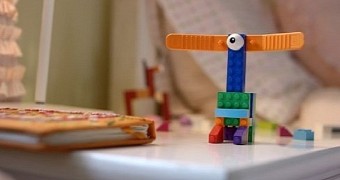A bunch of videos are expected to be released today as part of an innovative project started by Lego, the famous company which manufactures plastic construction toys.
The campaign, which has a pretty weird name that most children would probably be unable to pronounce, will start by releasing videos put together in the form of short documentaries of children’s reactions when asked to build something that does not exist in real life using the interlocking toy bricks.
Lego’s Global director of social media and search announced that they are launching the project through a tweet, but apparently he also has some issues with the name of the campaign also. It is yet unclear whether the correct denomination is Kronkiwongi or Kronkiwonki, as he uses both.
It seems that he was the one who came up with the term and that it is somehow related to his childhood, but since it’s been quite a while since then, he should be pardoned for the confusion.
Facebook contributed to the initiative
These videos were put together with a little help from Facebook’s Creative Shop, the team made up of about 130 ad specialists whose job is to lend a hand to companies and brands to create better Facebook ads, which could have a greater impact on the public.
The Drum reports that the two companies have been working together for more than a year now and that they are ready to unveil the results of their fruitful collaboration.
With the help from Facebook’s professionals, it would be strange if the program were not a successful one.
Parents are encouraged to contribute to the final user-generated video by posting videos or images of themselves and their children building a Kronkiwongi.
The company’s vice president of marketing, Conny Kalcher, had previously declared that they are turning into a media company, mainly because they want to "tell a story about the bricks," and that were planning on working with their fans around the globe to co-create the content for Lego.
This is just a first step in engaging the consumers to take part in the creation process and they are using Facebook to reach them more efficiently.
Just launched our new project #Krongiwonki. We asked kids from all over the world to build a #Kronkiwongi http://t.co/nuMM6n47LI #LEGO
— Lars Silberbauer (@larssilberbauer) 29 aprilie 2015

 14 DAY TRIAL //
14 DAY TRIAL //